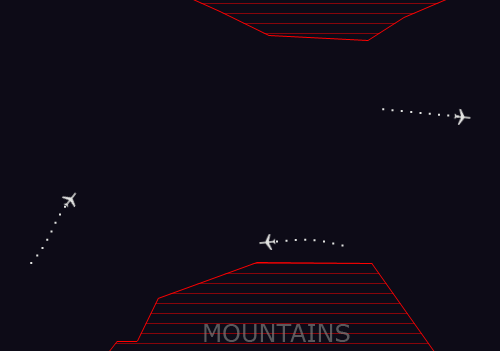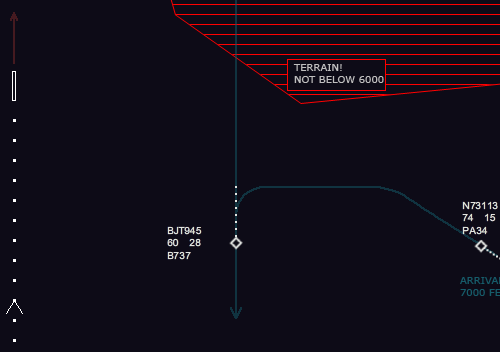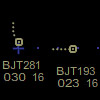It is interesting how a game evolves during it’s creation. We have put much more thought into Radar Chaos‘s target audience than we ever did with our other games. There are actually two target audiences: the Casual Gamer and the Aviation Nut. Radar chaos will consist of 12 maps. Four of these are basic mazes that don’t require any understanding of aviation. The remainder are realistic air traffic control sectors that require, at the very least, for users to read the included instructions.
 |
| The basic maze, a 2-dimensional challenge with no data tags |
My favorite map so far is the very first maze, aimed at the radar newbie. This map will also package as the ‘demo’ version on Facebook. Initial bet testing suggested that it was still a rather complex game for newcomers to jump right into, so we’ve designed Map 1 to be a basic 2-dimensional “keep ’em apart” exercise. It’s basic in concept, but challenging. My highest score is embarrassingly low, and I am certain that many will do far better than I.
 |
| An advanced map with realistic data tags and aircraft targets |
Radar Chaos becomes complex and highly realistic in the advanced levels. These levels offer optional selections such as true airspeed, realistic targets and data tags, as well as realistic delayed aircraft response. In real-world air traffic control, a control assignment such as a turn or a speed change is not observed for several seconds. In the real world, there is a great deal of airspeed error which must be incorporated into any simulation that claims to be realistic.
 |
| Options for realism are offered in the advanced maps |
Having said that, I’ve had to pass on several ideas received from real-world controllers, such as ‘visual approaches’, ‘auto overs’ and ‘point-outs’. These options don’t add to the fun. These items would add realism, but if you truly want to know what it’s like to be an air traffic controller, assemble six friends and have separate simultaneous conversations with all of them at once. That’s the only part that is missing from any online air traffic control simulation!
Radar chaos is on schedule for a release in early March 2011.










